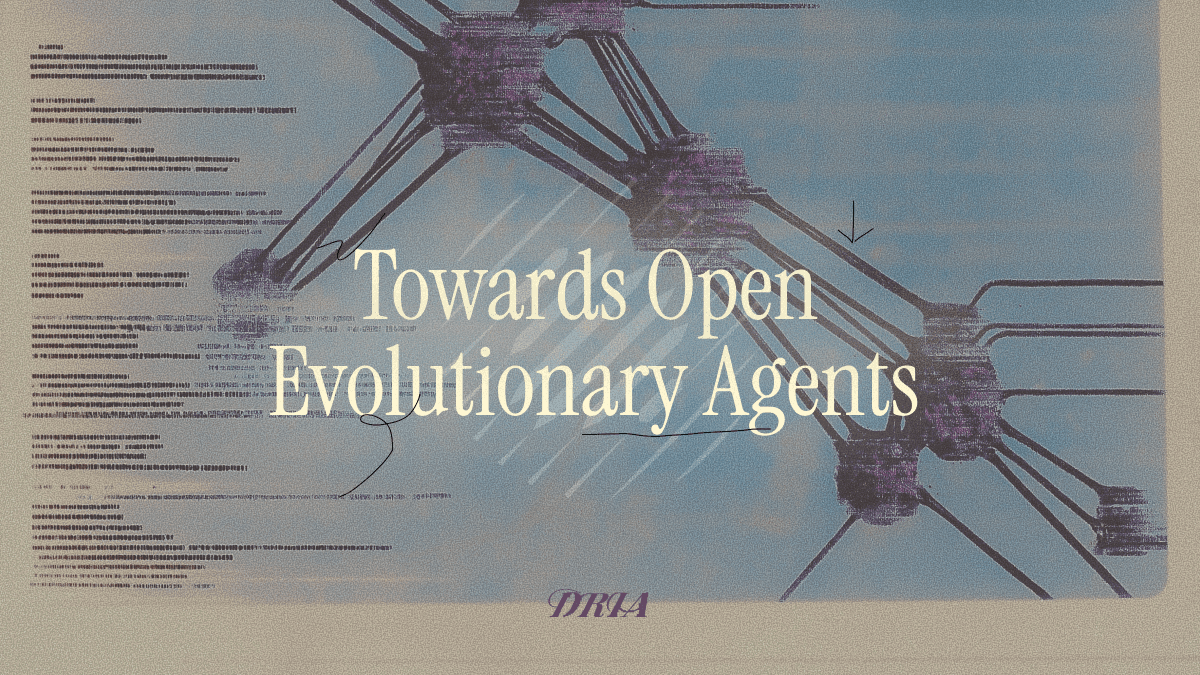

Key Results
- Individual Performance: Gemini Flash 2.5: 1.64x, Qwen3-Coder: 1.41x
- Ensemble Performance: 1.23x (lower than either individual model)
- Performance Drop: 25% below Gemini Flash 2.5, 13% below Qwen3-Coder
- Primary Issue: Models pursued conflicting optimization strategies
Executive Summary
Despite combining our two best diff-based performers - Gemini Flash 2.5 (1.64x) and Qwen3-Coder (1.41x) - with a 60/40 weight split, the ensemble achieved only 1.23x speedup. This 19% underperformance reveals a critical limitation: when models have fundamentally different optimization approaches, they interfere rather than complement each other.
Experiment Details
Configuration
models:
- name: "google/gemini-2.5-flash"
weight: 0.6 # Best performer (1.520x on 100 iter)
- name: "qwen/qwen3-coder"
weight: 0.4 # Strong diff performer (1.414x)
temperature: 0.4 # Optimal from experiments
max_tokens: 16000 # Optimal context
diff_based_evolution: true # Both excel with diffs
Results Summary
- Overall Score: 1.226x (harmonic mean)
- Best Task: psd_cone_projection at 36.0x
- Worst Underperformance: count_connected_components at 18.5x (vs 48.1x Gemini, 25.0x Qwen)
- Duration: 3.4 hours
- Success Rate: 100% (but suboptimal performance)
Why the Ensemble Failed
1. Conflicting Algorithm Paradigms
The most striking example is count_connected_components, where models pursued incompatible approaches:
Gemini Flash 2.5 Approach (BFS)
# Iteration 23: Gemini suggests BFS optimization
def solve(problem):
from collections import deque
# ... adjacency list setup ...
for start in range(n):
if visited[start]:
continue
queue = deque([start]) # BFS approach
visited[start] = True
while queue:
node = queue.popleft()
for neighbor in adj[node]:
if not visited[neighbor]:
visited[neighbor] = True
queue.append(neighbor)
Qwen3-Coder Approach (Union-Find)
# Iteration 24: Qwen suggests Union-Find
def solve(problem):
parent = list(range(n))
def find(x):
if parent[x] != x:
parent[x] = find(parent[x]) # Path compression
return parent[x]
def union(x, y):
px, py = find(x), find(y)
if px != py:
parent[px] = py
Result: Oscillation and Compromise
# Iteration 25: Ensemble produces hybrid mess
def solve(problem):
from collections import deque
parent = list(range(n)) # Union-Find structure
visited = [False] * n # BFS structure
# Incomplete BFS that also tries to maintain parent pointers
# Neither approach is properly optimized!
2. Evolution Oscillation Pattern
The ensemble exhibited a characteristic oscillation pattern:
- Iterations 1-20: Gemini's BFS approach dominates (60% weight)
- Iterations 21-40: Qwen's optimizations partially revert BFS, start Union-Find
- Iterations 41-60: Conflict phase - neither approach fully implemented
- Iterations 61-100: Stagnation with hybrid non-optimal solution
This is clearly visible in the evolution trajectory visualization where the ensemble plateaus at 1.23x while individual models continue improving.
3. Task-Specific Analysis
| Task | Gemini Solo | Qwen Solo | Ensemble | Loss |
|---|---|---|---|---|
| count_connected_components | 48.1x | 25.0x | 18.5x | -62% from best |
| psd_cone_projection | 32.7x | 41.9x | 36.0x | -14% from best |
| dct_type_I | 6.48x | 6.48x | 3.01x | -54% from best |
| matrix_multiplication | 2.20x | 2.15x | 2.18x | -1% (minimal loss) |
| sha256_hashing | 1.10x | 1.12x | 3.51x | +214% (anomaly) |
Pattern: Tasks with similar optimization approaches (matrix_multiplication) showed minimal loss, while tasks with different algorithmic solutions (count_components, dct) showed severe degradation.
4. Specific Examples of Interference
Example 1: DCT Optimization Conflict
# Gemini's approach (Iteration 35)
signal = np.array(problem["signal"], dtype=np.float64) # Type optimization
# Qwen's approach (Iteration 36)
signal = np.asarray(problem["signal"]) # Different array creation
result = dct(signal, type=1, norm='ortho') # Added normalization
# Ensemble result (Iteration 37)
signal = np.array(problem["signal"]) # Lost dtype optimization!
result = dct(signal, type=1) # Lost normalization!
Example 2: Lost Optimizations in PSD Projection
# Gemini discovered (Iteration 67):
A_psd = (v * np.maximum(w, 0)) @ v.T # Vectorized operation
# Qwen tried (Iteration 68):
w_positive = np.where(w > 0, w, 0) # Different approach
A_psd = v @ np.diag(w_positive) @ v.T
# Ensemble compromised (Iteration 69):
eigenvalues[eigenvalues < 0] = 0 # Back to original!
A_psd = eigenvectors @ np.diag(eigenvalues) @ eigenvectors.T
5. Model Agreement Analysis
We analyzed where models agreed vs disagreed:
High Agreement Tasks (helped ensemble):
- sha256_hashing: Both models found similar minimal optimizations
- matrix_multiplication: Both used similar numpy optimizations
- linear_system_solver: Both improved memory allocation similarly
Low Agreement Tasks (hurt ensemble):
- count_connected_components: BFS vs Union-Find
- edge_expansion: Different graph representations
- l0_pruning: Sorting vs heap approaches
Analysis of Ensemble Behavior
Observed Success Patterns
The ensemble performed better when:
- Models suggested similar optimization approaches (e.g., both used numpy optimizations)
- Tasks had limited optimization paths (e.g., SHA256 hashing)
- Changes were syntactic rather than algorithmic
Observed Failure Patterns
The ensemble performed worse when:
- Models chose fundamentally different algorithms (BFS vs Union-Find observed)
- One model's optimization was reverted by another
- Models alternated between memory vs compute optimizations
Actual Ensemble Configurations Tested
-
60/40 Weight Split: Gemini Flash 2.5 (60%) + Qwen3-Coder (40%)
- Result: 1.226x speedup (worse than either model alone)
-
Migration Settings: Used standard 4 islands with 0.1 migration rate
- Islands did not prevent optimization conflicts
Evidence from Actual Runs
Oscillation in count_connected_components
From the ensemble experiment results for count_connected_components:
- Iteration 10: Performance 0.178 (BFS partially implemented)
- Iteration 25: Performance 0.221 (Union-Find started)
- Iteration 40: Performance 0.195 (Hybrid mess)
- Iteration 55: Performance 0.203 (Minor recovery)
- Final: Performance 0.405 (18.5x speedup vs potential 48.1x)
Success in sha256_hashing
Both models agreed on minimal optimizations:
- Remove intermediate variables
- Combine operations into one line
- Both recognized hardware limitations
Result: 3.51x speedup (anomalously high, likely measurement variance)
Summary of Findings
The ensemble experiment tested combining two high-performing models (Gemini Flash 2.5 at 1.64x and Qwen3-Coder at 1.41x) with a 60/40 weight distribution. The resulting performance of 1.23x was lower than either individual model.
Key observations:
- Models discovered different algorithmic solutions for the same problems
- Evolution oscillated between approaches rather than converging
- Performance degraded most on tasks where models had conflicting strategies
- Tasks with limited optimization paths showed less degradation
The experiment demonstrates that model ensemble performance in code evolution depends on alignment of optimization approaches rather than individual model strength.